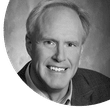

DEPARTMENTS

PRESIDENT'S MESSAGE
JOHN MULHAUSEN, PhD, CIH, CSP, FAIHA, retired in 2018 from 3M where he worked for 31 years in a variety of global health and safety risk management roles, most recently as director of corporate safety and industrial hygiene.
Send feedback to The Synergist.
A Culture Change for OEHS
BY JOHN MULHAUSEN, AIHA PRESIDENT
Over the past year, AIHA has introduced four initiatives to advance our professional practices and aim for a higher level of performance for our OEHS programs. In my Synergist articles, I’ve described these necessary changes as moving from simple competence to a higher plane of competence plus performance. Competence concerns what we know, but performance is what we actually do—the decisions we make and the actions we take that directly impact outcomes on the shop floor.
IMPROVING OUTCOMES
The four new initiatives are intended to improve the performance of our OEHS practices, the science on which we rely, and the outcomes for workers and communities:
Defining the Science. This AIHA/ACGIH initiative seeks to define, manage, and advocate for research that will improve our ability to protect workers and communities. The advisory group formed to oversee this work has made significant progress over the past year. The next phase of DTS work will be discussed at an open forum at AIHce EXP in Nashville on May 25 from 1 to 2 p.m. For background on DTS, visit the AIHA website and read my September Synergist article.
Improving Exposure Judgment Accuracy. This second AIHA/ACGIH initiative focuses on improving the accuracy of the qualitative and quantitative exposure judgments so critical to worker protection. An advisory group has been formed, and an open forum will be held at AIHce on May 25 from 10:30 to 11:30 a.m. For more information, see the AIHA website, the project charter (PDF), and my articles in the November and December issues of The Synergist.
Standards of Care. The goal of this initiative is to document a concise, easy-to-use summary of minimum OEHS practice performance expectations that ensure acceptable worker protection. See the initiative webpage, the project charter (PDF), and my article in the January Synergist for more information. There will be a Standards of Care open forum at AIHce on May 25 from 9 to 10 a.m.
State of the Art vs. Practice Continuous Improvement Process. This initiative will implement a strategy to help close risk-critical gaps between current OEHS practices and best-in-class practices. AIHA plans to beta test an initial process later this year. For more information, visit AIHA's website.
Practices that lead to faulty judgments are not mere gaffes; they are serious errors that waste precious resources and have real consequences for worker risk.
A NEW MINDSET
During my term as AIHA president, I’ve written often about topics related to these initiatives because I believe that we need to develop a sense of urgency about improving elements of our work. Practices that lead to faulty judgments are not mere gaffes; they are serious errors that waste precious resources and have real consequences for worker risk. Ignoring scientific advances that will significantly improve worker protection—such as NIOSH’s occupational exposure banding e-tool and the tools for qualitative exposure judgments and Bayesian statistics—are irresponsible at best, dangerous at worst.
The key to correcting these problems is to adopt a mindset that doesn’t settle for mere competence. In all aspects of our practice, including when we make exposure risk decisions, we need to strive for competence plus performance. Because in the end, it is not what we know that determines our effectiveness, but what we do and how our practices perform at protecting the health and safety of the workers and communities under our care.
So, for my final Synergist article as AIHA president, I urge readers not to slide back into complacency. Instead, join AIHA’s efforts to foster a culture in which we OEHS professionals quickly embrace risk-critical scientific advances that improve the performance of our practices and accelerate our progress toward a world where all workers and communities are healthy and safe.